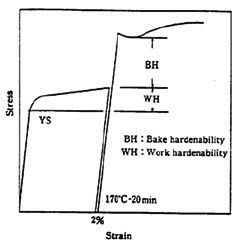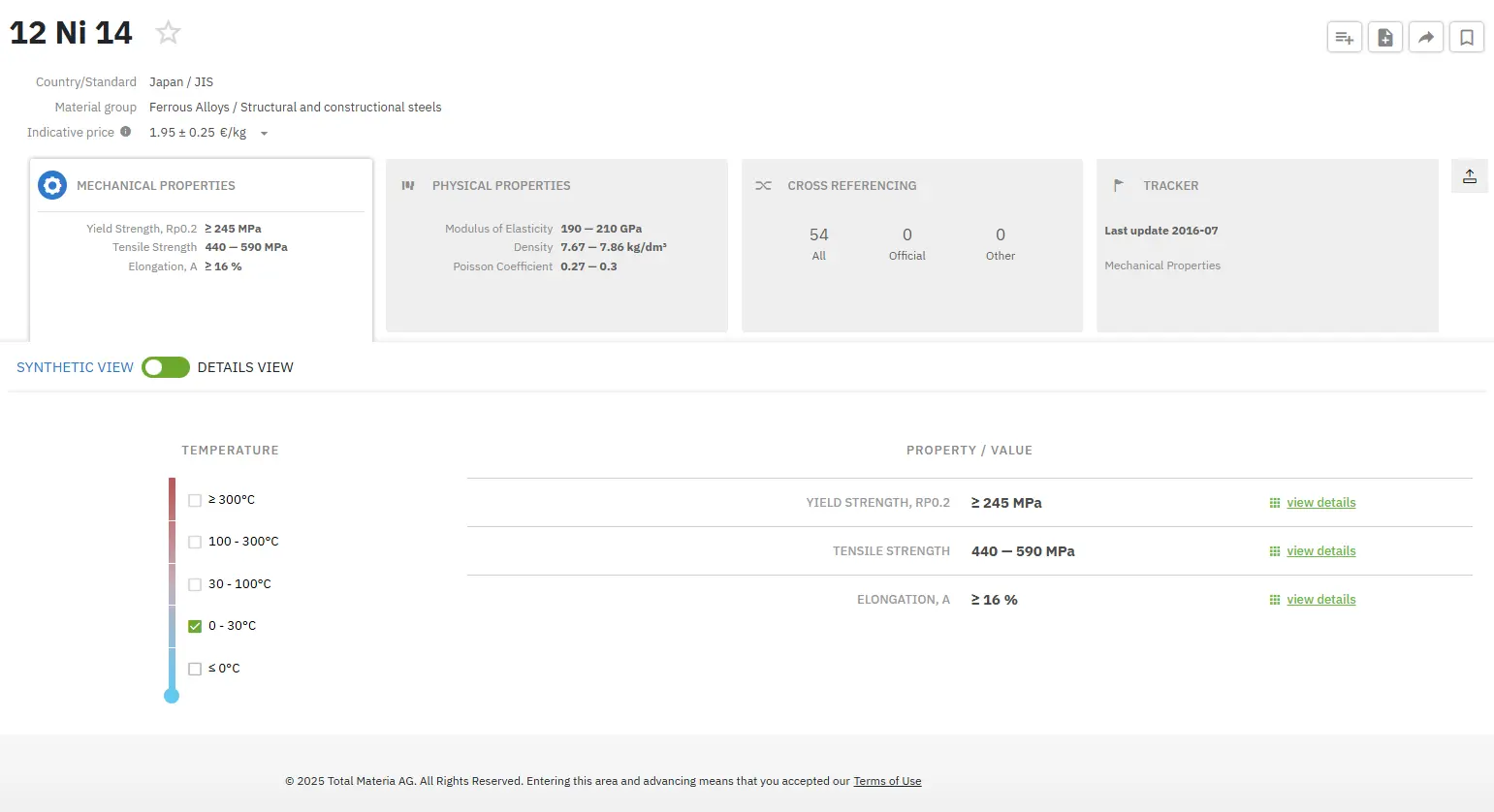Bake Hardenable Steels
Abstract
Bake hardenable steels represent an advanced category of low-carbon steels specifically engineered for automotive body applications requiring high strength combined with excellent formability. These steels achieve their optimal mechanical properties through a two-stage strengthening process: initial deformation during component forming, followed by controlled thermal aging during paint baking operations. This article examines the metallurgical principles behind bake hardening, production techniques involving optimized batch annealing treatments, and the mechanical property advantages of various BH steel grades. Particular attention is given to dent resistance applications in automotive panels and the strategic industrial benefits of presenting low initial yield strength material to stamping operations.
Introduction to Bake Hardening Technology
Bake hardening is an advanced processing technique to produce low carbon steels with enhanced strength, specifically designed for automotive body applications. An optimized batch annealing treatment creates the necessary conditions to maintain sufficient carbon in solution required for the bake hardening effect. This metallurgical approach allows automotive bodies and panels to strengthen significantly after undergoing paint baking treatment. The strengthening mechanism relies on the pinning of dislocations by solute carbon atoms, a phenomenon known as Cottrell's atmosphere formation.
Modern manufacturing technologies enable precise control of ultra-low-carbon vacuum-degassed steel through careful alloying additions. These techniques produce partially stabilized steels containing controlled amounts of solute carbon available after precipitation reactions are completed during galvanizing processes.
Metallurgical Principles and Strengthening Mechanisms
Bake hardenable steel (BHS) utilizes controlled carbon strain aging to augment the yield strength of formed automotive panels, thereby improving dent resistance or enabling thickness reduction for weight savings. The strain comes from press forming operations, while the aging process is accelerated during the paint baking thermal cycle. These steels contain precisely controlled amounts of supersaturated solute carbon, typically providing strength increases of 27 to 55 MPa (4 to 8 ksi) to stamped panel yield strength after baking.
The primary advantage of this approach is that it presents formable low yield strength material to stamping operations, avoiding panel shape problems associated with elastic deflection that commonly occurs when initial yield strengths exceed 240 MPa (35 ksi). The carefully controlled level of supersaturated solute carbon is sufficient to provide useful accelerated strain aging without premature aging during transportation and storage. BHS products typically remain free from stretcher strains for 2-3 months after production, allowing manufacturers adequate time for processing.

Figure 1: Bake hardening phenomenon
Commercial BH Steel Grades and Properties
USS Steel BH Grade Classifications
A bake-hardenable steel is defined as any steel exhibiting significant strength increase through the combination of work hardening during part formation and strain aging during subsequent thermal cycles like paint-baking operations. USS Steel produces several grades of bake-hardenable steels:
- BH180
- BH210
- BH240
These grades are generally aluminum-killed steels with sufficient aluminum to combine with nitrogen as Aluminum Nitride (AlN). The controlled amount of carbon and/or nitrogen in solution enables the strain-aging effect that characterizes these materials.
Mechanical Properties and Performance Characteristics
Bake-hardenable steels offer an ideal combination of relatively low yield strength prior to manufacturing and high in-part strength after forming and paint baking. This makes them particularly suitable for applications where dent resistance and palm printing resistance are critical. The material can be effectively used in relatively deep draw or stretching operations. The high in-part strength also makes these steels excellent candidates for downgaging (thickness reduction) to support vehicle weight reduction efforts.
When implementing bake-hardenable steel, designers must consider that the strain introduced during forming largely determines the final part strength. Since automotive body panels vary widely in design complexity, there will be corresponding variations in strain distribution. Effective part design should incorporate adequate strain to fully utilize the material's dent resistant characteristics.
Table 1. Typical properties for BH 180 MPa grade across different product forms
| Product | Yield Strength [MPa] |
Tensile Strength [MPa] |
Elongation [%] |
n-value |
| Cold Rolled | 196 | 325 | 38.9 | 0.210 |
| EG | 196 | 325 | 38.9 | 0.210 |
| EG Alloy | 196 | 325 | 38.9 | 0.210 |
| HDGI | 185 | 305 | 39.3 | 0.210 |
| HDGA | 185 | 305 | 39.3 | 0.210 |
Table 2. Typical properties for BH 210 MPa grade across different product forms
| Product | Yield Strength [MPa] |
Tensile Strength [MPa] |
Elongation [%] |
n-value |
| Cold Rolled | 223 | 344 | 37.8 | 0.200 |
| EG | 223 | 344 | 37.8 | 0.200 |
| EG Alloy | 223 | 344 | 37.8 | 0.200 |
| HDGI | 230 | 355 | 34.2 | 0.190 |
| HDGA | 230 | 355 | 34.2 | 0.190 |
Table 3. Typical properties for BH 240 MPa grade for EG product form
| Product | Yield Strength [MPa] |
Tensile Strength [MPa] |
Elongation [%] |
n-value |
| EG | 256 | 378 | 34.7 | 0.190 |
Application Advantages and Engineering Considerations
Weldability and Manufacturing Benefits
The low carbon content of bake-hardenable steels makes them excellent candidates for welding operations in automotive manufacturing environments. This characteristic simplifies assembly processes while maintaining structural integrity.
Fatigue Performance and Durability
When properly implemented, bake-hardenable steels demonstrate excellent resistance to fatigue due to their high post-forming and post-baking yield strength. This property is particularly valuable for components subjected to cyclic loading during vehicle operation.
Dent Resistance Applications
Bake-hardenable steels were specifically engineered to provide superior dent resistance for automotive exterior panels. Their unique strengthening mechanism allows manufacturers to produce panels that better withstand minor impacts from shopping carts, car doors, and other common causes of surface deformation.
Typical Automotive Applications
These materials provide automotive manufacturers with solutions for reducing dents and dings in modern vehicles while meeting formability requirements for exterior applications. Components that benefit from the work and bake hardening strengthening mechanisms include:
- Doors
- Deck lids
- Quarter panels
- Fenders
- Hoods
- Roofs
These exterior parts experience the full benefit of both work hardening during forming and bake hardening during paint curing operations, resulting in superior dent resistance in the finished vehicle.
Conclusion
Bake hardenable steels represent an important material innovation for automotive manufacturing, offering an optimal balance of formability during production and strength in the finished component. Their carefully controlled metallurgical properties allow manufacturers to produce lighter, stronger body panels with improved dent resistance. As vehicle manufacturers continue to pursue weight reduction and improved performance, bake hardenable steels will remain a critical material solution for exterior body applications.
Znajdź natychmiast dokładne właściwości materiałów!
Total Materia Horizon zawiera właściwości mechaniczne i fizyczne setek tysięcy materiałów, dla różnych temperatur, warunków i obróbek cieplnych i wiele więcej.

Uzyskaj BEZPŁATNE konto testowe w Total Materia Horizon i dołącz do społeczności ponad 500 000 użytkowników z ponad 120 krajów.